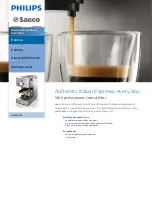
6
6
Safety Precautions
The Floor Grinder has been designed to minimize noise, vibration levels and to
provide maximum operator safety. However, incorrect use of the grinder may
cause serious injury and therefore the following precautions must be taken:
1.Do not use the grinder for longer than prescribed in your local environmental
working regulations, as the noise load from extensive daily use may result in
hearing damage.
2.Always use hearing protection, goggles, gloves, lung protection (NIOSH
mask or respirator as appropriate) and appropriate closed-toe footwear.
3.Do not modify the grinder in any manner. Do not use a machine that has
been modified by anyone other than the manufacturer or authorized dealers.
4.Do not add weight to the machine. Use different grinding plates to achieve
the desired grinding performance. Added weight can glaze tooling.
5.Do not operate the grinder with the grinding head raised any higher than
necessary. i.e. tipped back on handle.
6.Always be sure that folding handle latch is secure and has not become
loose during use.
7.During normal use the machine is exposed to vibration. Occasionally
check machine for bolts/nuts and wire connections which may have vibrated
loose.
8.Do not allow water or flammable materials to enter the interior of the
Motor.
9. Be aware of the area and people around you while working. Keep a 10’
safety buffer between the machine and other workers or sensitive items.
Respirable Silica Dust Warning
Grinding/cutting/drilling of masonry, concrete, metal and other materials can
generate dust, mists and fumes containing chemicals known to cause serious
or fatal injury or illness, such as respiratory disease, cancer, birth-defects or
other reproductive harm. If you are unfamiliar with the risks associated with
the particular process and/or material being cut or the composition of the tool
being used, review the Safety Data Sheets (SDS) and/or consult your employer,
the manufacturers/suppliers, governmental agencies such as OSHA and
NIOSH and other sources on hazardous materials.
Use engineering controls to control dust, mist and fumes at the source wherever
possible. Use good work practices and follow the recommendations of the
manufacturers/suppliers, OSHA/NIOSH, and occupational and trade
associations. Water should be used for dust suppression when wet
grinding/cutting/drilling is feasible. When the hazards from inhalation of dust,
mists and fumes cannot be eliminated, the operator and any bystanders should
































